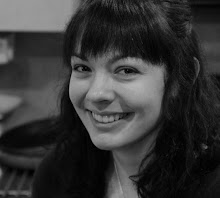For as long as I can remember, I've wanted to tell stories; in kindergarten, I drew "picture books" since I didn't quite have the vocabulary necessary to write the words I wanted. By grade two, I was well on my way to writing chapter books; I finished one novel by the beginning of grade seven (which now I read and think it is absolutely atrocious and would die of embarrassment if ever anyone else read it), and in the summer between grade nine and grade ten, I finished a second, much larger novel (nearly 400 000 words at last count, currently into its eighth round of revisions and re-writes - what can I say? I'm a perfectionist).
However, it is filmmaking that is my greatest passion, and I want to be able to write good screenplays. There are significant differences between novels and screenplays, as I'm sure is obvious, and for some time I had been at a loss as to how to properly go about translating the stories in my mind to script form.
Then one day, I found a book.
I used to work at Chapters, part of a chain of bookstores across Canada (officially Indigo Books & Music, but I won't go into the details of the corporate schemes that resulted in one company having stores under five different names). Often I would find reasons to "tidy" the "Entertainment & Pop Culture" section of the store, where all the film-related books are kept. While browsing through them, I came across the most interestingly titled book I had ever seen:
Save the Cat!: Goes to the Movies.
What?
It caught my attention right away. What kind of book was this? I pulled it off the shelf and started turning the pages. Written by Blake Snyder, the book taught screenwriting in the most intriguing way. Goes to the Movies was actually the sequel to another book, which we didn't have in store at the time, and it seemed to expand on the more theoretical aspects of the first book by giving extensive examples of how Snyder's methods work.
It was brilliant.
Unlike some theory books that are difficult to read for their text-heavy pages and pages of details for why you must do exactly as they say, because that's just how it is, this book was written like a discussion between the reader and the author. It is like you are sitting with Blake Snyder over coffee and having a great chat about movies, scripts, what works and what doesn't. He tells you what critical points need to happen in your script, and gives them names that are easy to remember and recognise.
Goes to the Movies takes all the concepts from the first book and applies them to a wide range of films that provide excellent examples of Snyder's different categories of films, then takes the stories apart and shows exactly how they fit with Snyder's own Beat Sheet. After reading through a number of these, and thinking about films I'd seen recently, I had a "Eureka!" moment. It was true. Most successful films really do follow certain patterns.
I've never been able to watch a film since then without thinking of Snyder's Beat Sheet (or as he refers to it, BS2).
In particular, such parts of the script such as "Fun and Games", "Bad Guys Close In", "All is Lost", "Dark Night of the Soul" and "Break into Three" are greatly applicable to nearly any script, and the names make it clear just what sort of situation our characters are in at that point in the story. Snyder even gives page references to show at about what point in the story these parts will happen, and I haven't seen very many films since reading this book that have not followed this exactly.
Not long after reading about half of Goes to the Movies, I finally managed to acquire the first book, aptly titled Save the Cat!: The Last Book on Screenwriting You'll Ever Need.
It really is.
Just like Goes to the Movies in it's conversational tone, it teaches you how to take a good idea and make a great script out of it. Snyder shares stories of his own screenwriting mistakes and how to avoid doing the same thing; he teaches the importance of "proportions" and structure. Though it is true that many films defy such conventions and do their own thing, they do not always succeed with that intent.
Snyder's fantastic Beat Sheet is a great tool when I start to write a screenplay. It really makes you think about what it is you want to write, what the theme is, the story, the characters, the conflicts; it fully prepares you for the act of actually writing it out.
I highly recommend these two books for anyone interested in screenwriting; they will not only teach you what you need to know, but inspire you.
Note:
I've heard that there is a third book out there somewhere, but I have not been able to find it anywhere. I believe it is called Save the Cat! Strikes Back, and if anyone knows where I can buy it, let me know! I would love to read it.



0 comments:
Post a Comment